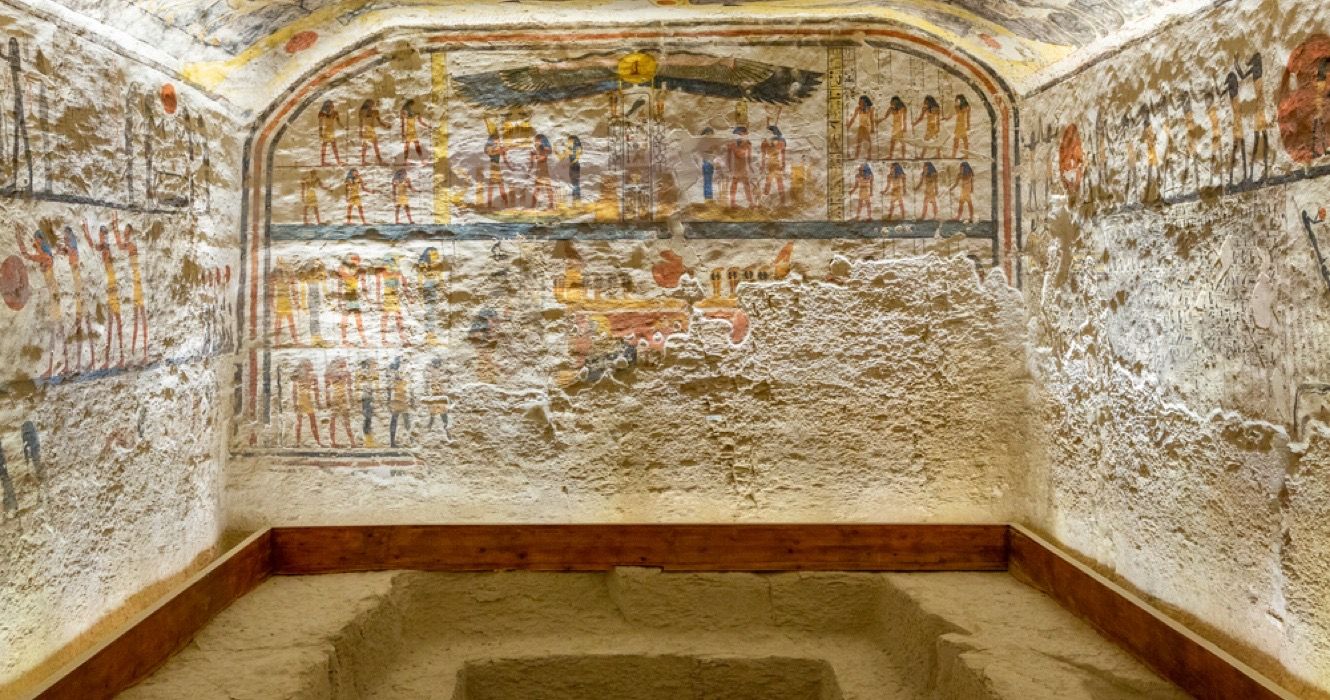Quick Links
Here’s the truth. Egypt will interest an archeologist—who digs up dirt and rabble to discover buried cities; a historian who is thrilled by the events and persons who have shaped the trajectory of Western Civilization, or just ordinary travelers, out to satiate the biting pangs of wanderlust. One can enjoy tours to some lost cities like Heracleion, Aten, or Tanis; take voyages along the Nile—whose waters and mud helped shape world history—or just wander about in the deserts.
However, whatever one does in the famed land of Pharaohs, a visit to Egypt is never truly complete without a sneak peek into the pyramids—Egypt's number 1 attraction. One of these houses the mummified body of King Tut, known for its golden sarcophagus. In this article, we show that King Tut’s tomb housed thousands of other fascinating artifacts other than the popular golden sarcophagus.
The Fascinating Artifacts In King Tut’s Tomb
King Tut’s golden sarcophagus has always stood out among history’s best-preserved relics. And for a good reason. When Egyptologist Howard Carter discovered the tomb in 1922, it caused a worldwide sensation. For starters, it was the best-preserved tomb ever found in Egypt’s Valley of the Kings. An inlaid coffin made of solid gold would be discovered inside the sarcophagus about two years later. It would become one of the most splendid architectural finds in the archeological history of Egypt. Yet, even though the golden coffin gobbled the attention of the world, perhaps deservedly, Carter’s finds included other treasures and artifacts that were just as splendid.
One mind-boggling aspect of this find was the sheer number of artifacts that had lain buried for over 3,000 rolling years: a staggering quantity of about 5,000. By all accounts, this would be impressive. And to make the discovery even more glorious, many of these artifacts were in pristine condition as if completely unaffected by the passage of 30 centuries. One of the most famous finds around the mummified body of the boy-king was the king’s own death mask which has since been recognized as one of the greatest works of art ever excavated.
All About King Tut’s Death Mask
When he first entered the tomb, Carter, the ebullient British archeologist who was excavating King Tut’s burial place—could not see well. Actually, he could see nothing. But as his straining eyes got accustomed to the light, outlines of fascinating objects started to emerge dramatically. Growing impatient, his companion and patron shouted behind him: "Can you see anything?" In the magnitude of this discovery, Carter’s reply was apt: "Yes, wonderful things!" After he had raised the coffin, the king’s death mask stood out in breathtaking elegance. It would be a symbol of ancient Egyptian finery and arguably the best-known object from ancient Egypt.
King Tut’s death mask looks like Osiris, the Egyptian god of the afterlife. The edifice is 1.8 feet tall, weighs about 22 pounds, and is overlaid by colored precious stones. When Carter first gazed at it in complete bewilderment, he described its facial expression as “sad but tranquil.” The death mask depicted the boy-king wearing a stripped headdress. Incidentally, Egyptian pharaohs typically wore headdresses made of striped cloth. The death mask also shows the king in a beard, albeit a false one, and an oversized collar—that gives him a regal bearing.
The mask had two purposes. The obvious one was to cover the face in royal grandeur. The second one is a bit creepy: To allow the spirit to recognize the body in the afterlife.
- Where Can I See King Tut’s Death Mask? King Tut’s death mask is on display at the Egyptian Museum in Cairo, where it’s one of the greatest crowd-pullers.
Other Interesting Artifacts In King Tut’s Tomb
Aside from the death mask, artifacts that were also discovered in King Tut’s tomb include six disassembled chariots, shields, and daggers. The last two are not surprising, considering King Tut loved hunting—especially hunting ostriches. King Tut’s tomb also contained numerous weapons, a good number of finely carved furniture items—most of which are overlaid with gold—and at least two royal thrones. Egyptians buried mummified corpses with their treasures because they believed they would need these treasures in the afterlife. For pharaohs, this was even more necessary.
Aside from these, Tut’s tomb included such stuff as couches, headrests, and ritual beds. These were also important as Egyptians wanted their dead to be comfortable in the afterlife. That’s also the reason King Tut’s tomb included several chairs as well. There were also chests that held invaluable items of jewelry as well as clothing made of fine linen. Then there were jars containing perfumes, ointments, and various types of oils. Other artifacts which were discovered were writing material, several musical instruments, food, and about 30 bottles of wine—besides several others. All this can now be seen at the Grand Egyptian Museum in Cairo.
That’s it. While King Tut’s golden coffin is a world sensation, the king’s death mask and countless other artifacts are just as impressive.

